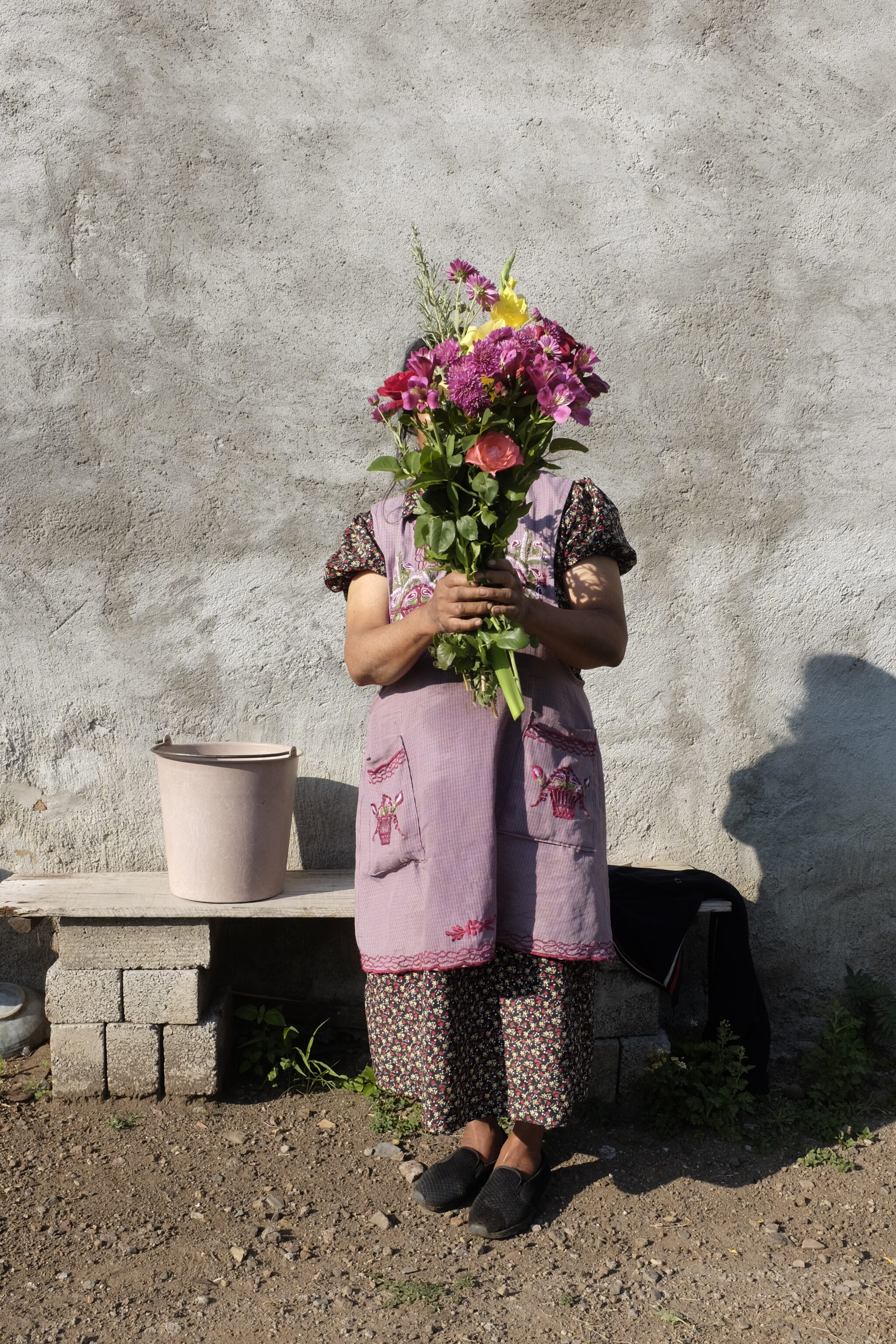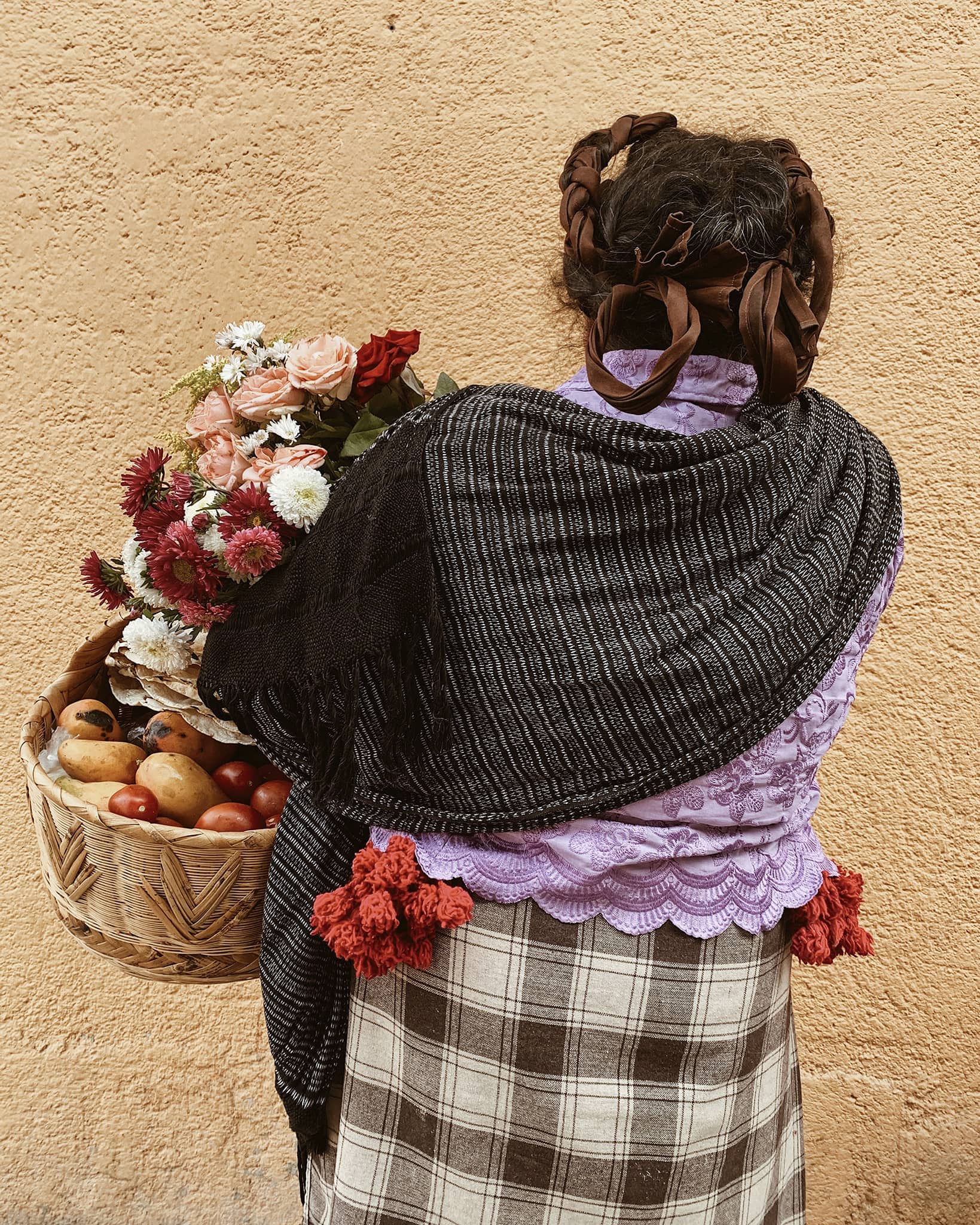
Faces that get lost
Luvia Lazo is a Zapotec photographer who captures the moment when faces ‘begin to fade.’ It’s an idea that her language has a word for it and is used when someone moves away, stops visiting, or disappears. With this idea in mind, Luvia portrayed the elders of her community, whom she identifies as nearing the end of life. Now, she has begun a deeper exploration of the transformation of the body in old age.
By Marcela Vallejo
One day, the Zapotec photographer Luvia Lazo arrived at the house she shared with her grandparents. When her arrival was sensed, her grandfather Domingo said to her, ‘Luvia kanitlow,’ which means, ‘Luvia, your face is starting to disappear.’ Domingo had a cataract problem that had been progressing, and his vision was becoming increasingly blurred.
A possible translation would be, ‘Luvia, I’m going blind,’ but her grandfather wasn’t just talking about his vision loss. It was the last day of his life. ‘When he was dying and could no longer see,’ Luvia explains, ‘he couldn’t even open his eyes, and he told me that he had lost my face for good.’ It was something definitive for which there were no possible surgeries. What her grandfather told her stayed in her memory.
During those days, Luvia used to take walks in Teotitlán, her village. Her grandparents’ house is very close to the cemetery, and she often looked out to observe the rituals, music, and festivities. One day, she saw a man carrying a bundle of indigo-dyed threads. When she saw him, she remembered her grandfather and was captivated by the image. She asked the man for permission to make a portrait. That was the first in the series ‘Kanitlow, los rostros se pierden’ (Kanitlow, faces are lost).
Luvia has been working on this series of portraits for a couple of years now, with the main characteristic being that the person’s face is not visible. She portrays elders and seniors from her community, people in the twilight of their lives, some of whom have passed away. VIST selected her work during portfolio reviews at Mirar Distinto 2023.
This exploration has slowly led her to others. For her, ‘Kanitlow’ is the first layer, and she is now discovering the others: the transformation of the body in old age, the reality imposed by the death of the elderly in indigenous communities, the end of life, and the gradual disappearance of some faces.
Luvia is a photographer, she says, because writing doesn’t work well for her. And because once she left her village to study, returning home, she rediscovered it through the camera. This also strengthened her relationship with her grandparents and great-grandparents.

How did you start the Kanitlow series?
When my grandfather passed away, I had a grant from FONCA for Young Creators, and I was working with women from my community. But I was in the midst of grief, and I talked to my mentors to tell them that my work didn’t feel honest. So, at that moment, I started photographing my grandfather’s spaces.
I took photos, for example, when I went to collect his clothes. At that point, his closet only had three shirts. I began to navigate this grief and noticed many grandparents who I felt were close to passing, like my grandfather. I knew them from the market, which was also influenced by Covid when many older adults were dying.
So, I started paying more attention to these signs of death their way of walking, and decided to photograph many of them. Several of the people I photographed have passed away in the last year.
How do people react when you ask for a portrait but also request that they cover their faces?
I know all the people I photograph. So when I approach these grandmothers and grandfathers I want to photograph, there is a prior dialogue. The reaction is quite curious when I tell them I want to take a photo without showing their faces or asking them to turn around. They expect the picture as is, the portrait as is, and when I ask them to turn around, there’s even a sense of bodily comfort. Then, there’s curiosity, and they say, “How do I look? What do I look like from behind?”

There’s something that your project, particularly its name, makes me think about, and it’s the idea that something disappears in indigenous communities with these elders. At the same time, I feel it’s a somewhat static idea to think that if the old people die, something else dies.
I’m very much in favor of the idea that everyone should have the right to choose. Just because you were born an artisan, it doesn’t mean you have to remain an artisan for life, even though most of the country thinks it should be preserved because it’s important. It’s also important to acknowledge if, as a person, you feel the need to say, ‘Well, I was born this way, but I want the opportunity to choose to be, in my case, a photographer.’ My parents are butchers, and well, I’m a butcher, and I embrace that part, but I also want the opportunity to choose because I believe that what everyone has to say and share is essential.
For example, in my photos, there’s a man named Emiliano. I took this photo on the coast, and Emiliano, may he rest in peace, is dressed entirely in a ‘manta’ (cloth) and sells little bananas in the market. But there are others, like the man with the indigo-dyed threads, and he’s wearing a pair of Levi’s, not his threads. In this case, neither Emiliano is more than the other, nor is the man in the Levi’s less. It’s a social, political, and cultural moment and a form of many things we must experience.
The photos have several elements: the locations, the clothing people wear, and the elements that cover their faces. Is it you who chooses these?
I’m interested in having the photos happen naturally and showing how people live. I’m not interested in asking people to wear traditional clothing for me to photograph. Many questions invade my mind because there’s a thin line between whether I’m reinforcing something or just recording or documenting.
I know that these photos are often questions I ask myself. For example, why did people stop weaving? It’s not just because they don’t like it; it’s also influenced by economic factors, like saying this doesn’t sustain me. I asked the man with the indigo-dyed threads about his pants, and he said his son, who is in the United States, sends them to him. So, all of this is related to many other issues that intersect in the image.
The first reading you can give them is, “Oh, how beautiful Mexico, flowers,” right? Many people stop there. But they go much further.

You’ve mentioned that Kanitlow is a first layer, and you’re now exploring a deeper one. What’s it about?
It started with my grandfather, but I realized it later. I took several photos when I said, ‘One day, he’ll be gone.’ They were images of his eye with cataracts, his little hand, or these things about grandparents that you can’t quite make sense of. For example, my grandfather used to fasten his shirt with a paperclip, and he wouldn’t let anyone fix it.
This new layer emerged as I got closer to these people, and through the interaction, I started to see how they transformed. It’s about their skin, the weariness in their gaze, or something quite curious happens – the spaces where they sleep become smaller. In other words, I see how they start to become smaller.
But I have only seen glimpses of this so far. When I was at the Mirar Distinto portfolio review, I ended up with two photos, and that’s a guide to what’s calling me now.


